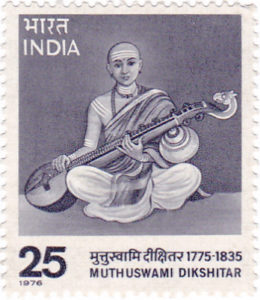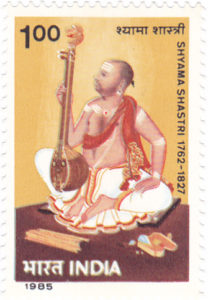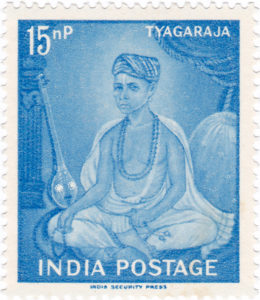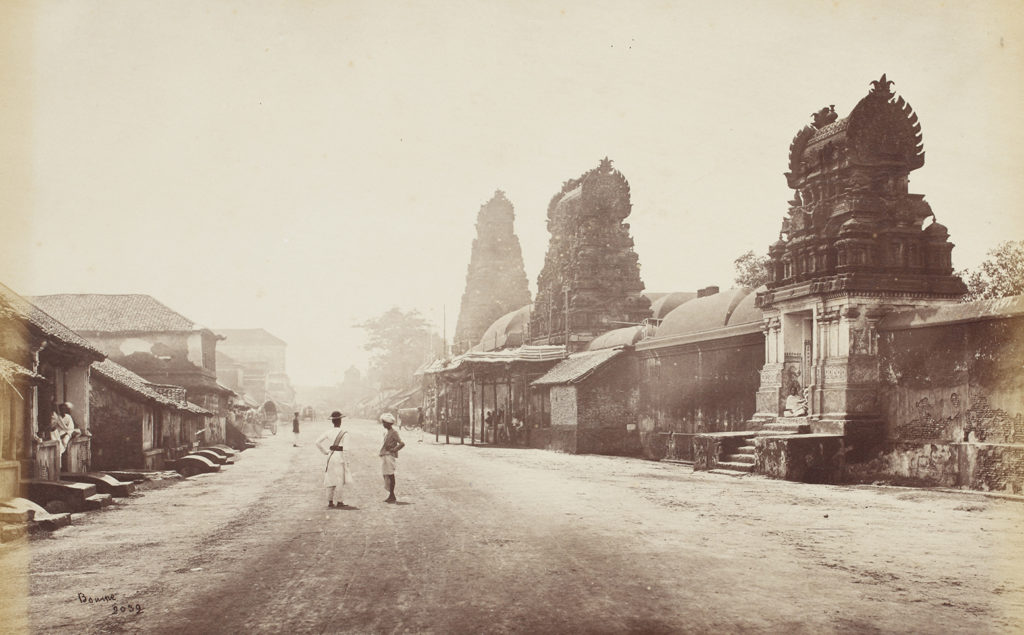
‘Street Scene, Tanjore’ by Samuel Bourne © Sarmaya Arts Foundation
A strange terror gripped a little town on the Cauvery delta. The rakshasa Tanjan was roaring fire and fury across the skies, holding innocent citizens hostage in his evil thrall. The terrified people sent up a prayer beseeching the gods for help. Enter Lord Vishnu. He sent his Sudarshan Chakra flying, defeated the rakshasa and saved the day. Before receiving the fatal blow, the wretched Tanjan expressed a dying wish: “Name this city after me”. Thus was born Thanjavur.
The etymology of the word Thanjavur might also be traced to the Tamil words tanjam meaning refuge and ur meaning fertile land. True to its name, Thanjavur has provided a home to many who have arrived at its doors over the centuries. Among them were the Telugu and Marathi-speaking communities who poured in between the 16th and 18th centuries as a consequence of Nayaka and Maratha conquests in Cholamandalam. They assimilated into the Tamil cultural landscape while maintaining their own identities.
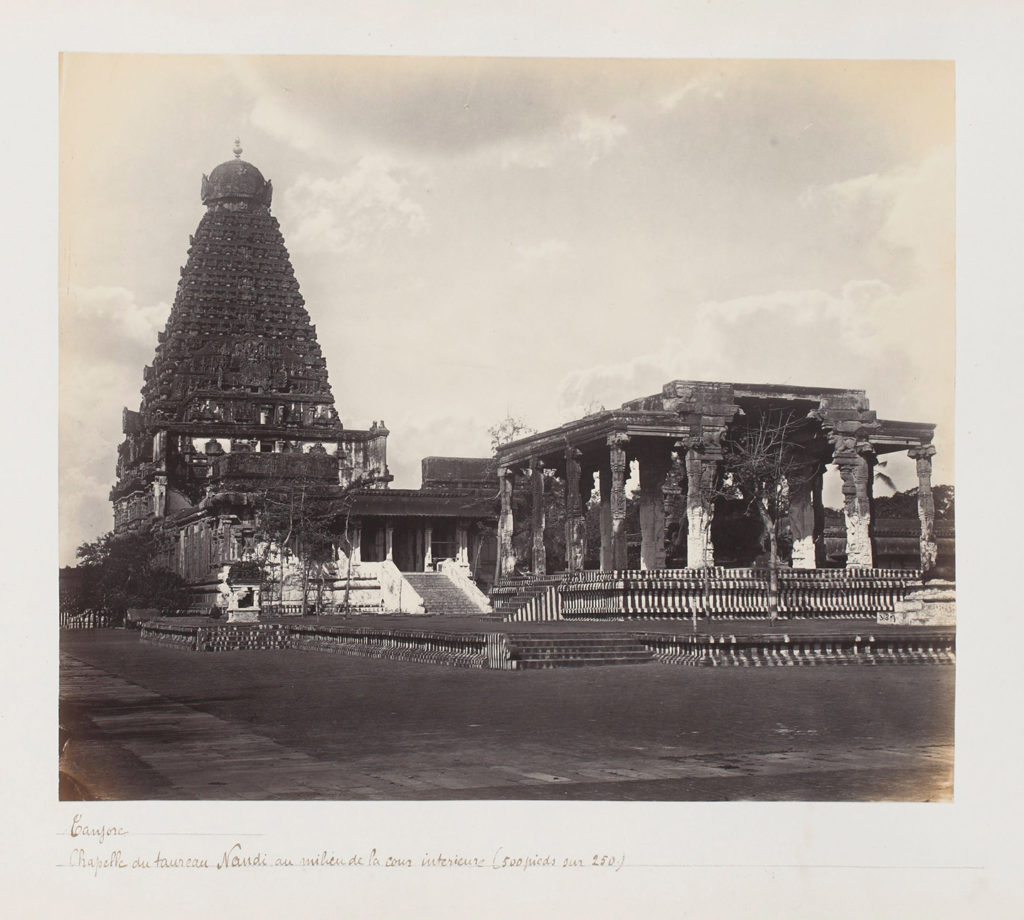
Brihadeeshwarar temple, Thanjavur © Sarmaya Arts Foundation
After the defeat of the Imperial Cholas at the hands of the Pandyas, Thanjavur was ruled by different dynasties until the dawn here of the Vijayanagara empire. According to 20th-century scholar Veturi Prabhakara Sastri’s Tanjavuri Andhra Rajulu Charitamu (The History of Thanjavur’s Andhra Kings), Vijayanagara emperor Achyutadevaraya (1529 – 42 CE) put Telugu Nayakas of the Balija caste in charge of Chola country. He gave Thanjavur in dowry to his sister-in-law Murtimamba who married Sevappa Nayak. Sevappa, whose ancestors had served under Vijayanagara rulers, thus established the Thanjavur Nayaka dynasty. The appearance of new Telugu rulers in Thanjavur did not change its Tamil culture, it only created a new, more vibrant one.
The Nayakas ruled until the late 17th century, when there was a rift between the Thanjavur and Madurai factions. The Telugu rulers asked the Bijapur Sultan for support and the Sultan appointed Ekoji (Chhatrapati Shivaji Maharaj’s half-brother) to take care of the situation. Ekoji gladly slipped in and defeated the Madurai Nayakas, but took over the throne for himself beginning the Maratha rule in Thanjavur in 1675—it would last for almost two centuries.
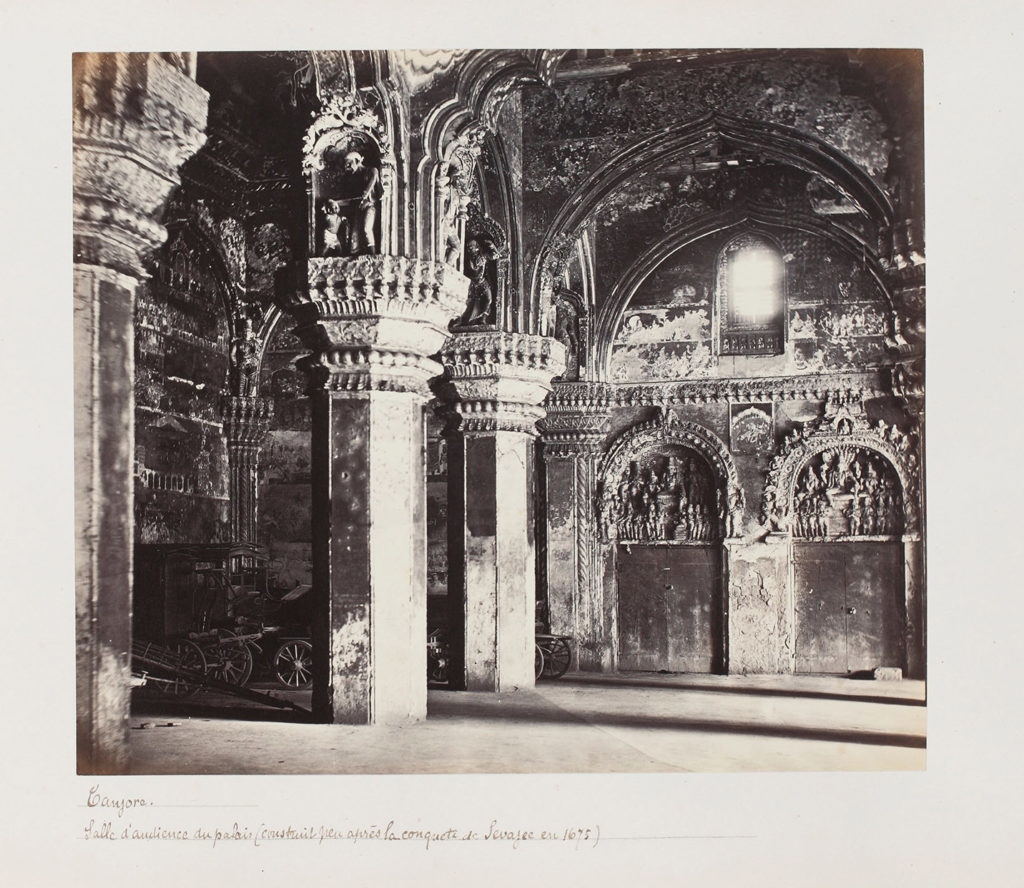
A view of the council chambers that date back to the Nayaka period, Thanjavur Mahal Palace © Sarmaya Arts Foundation
Thanjavur’s Telugu and Marathi legacies take various forms in this historic city. The Nayakas and Marathas commissioned many public utility and charitable works, besides contributing to the enrichment of literature, art and architecture. They actively restored, repaired and conserved monuments built by the dynasties before them and sometimes made artistic additions to these structures in their own style.
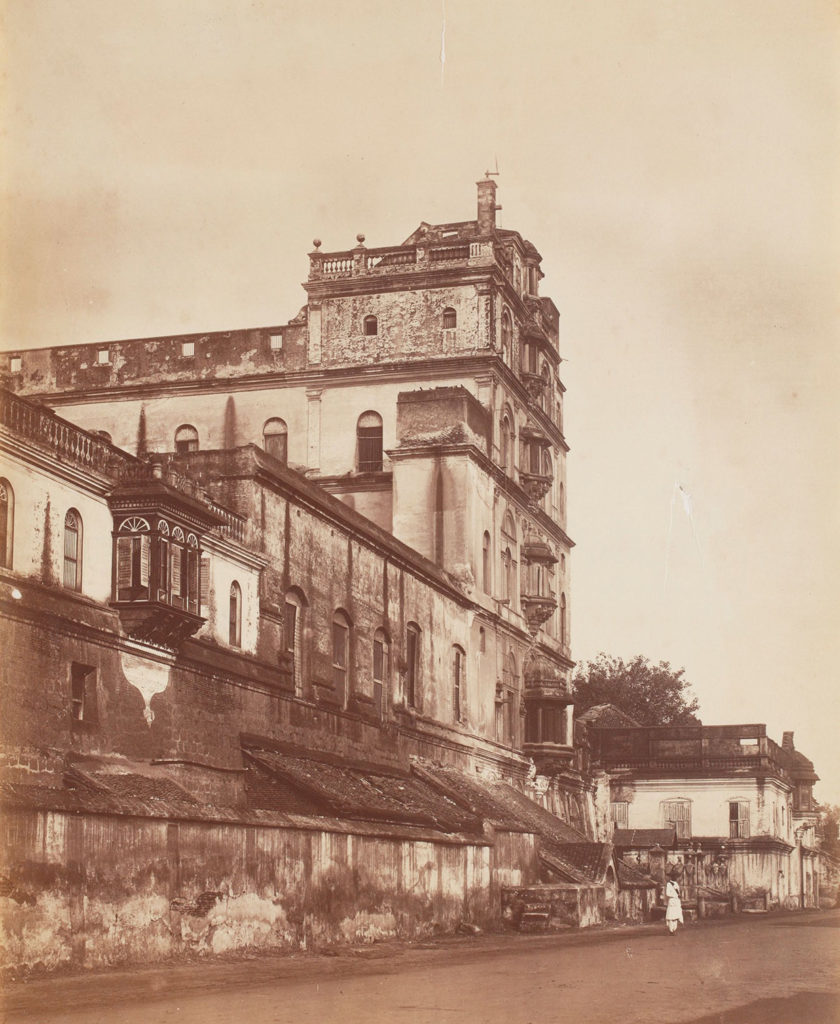
East side of the Thanjavur Mahal Palace showcasing Maratha architecture © Sarmaya Arts Foundation
The Sivaganga tank in Thanjavur, which is said to be built by Raja Raja Chola, was thoroughly repaired by the initiatives of Sevappa Nayaka. To make ensure the supply of water, he ordered a feeder tank to be built next to it called Seppaneri, corrupted from Sevappaneri or Sevappa’s eri, Tamil for lake or pond. The Thanjavur Mahal Palace, locally known as Aranmanai, was built by the Nayakas in the 16th century and later inherited by the Marathas, whose descendants continue to call it home. The Maratha kings made many additions to the Palace during their rule. The vivid Puranic scenes painted in the Durbar Hall and the presence of stucco figures of various gods and goddesses both represent the two distinctive cultures at play here. Another landmark is the Saraswathi Mahal Library, which was founded in the days of the Telugu Nayakas at the end of the 16th century. But it was furnished, well-stocked, and enriched by Serfoji II of the Marathas who was widely known as a great scholar and a connoisseur of art. He added old manuscripts in multiple languages – Indian and western – to the collection. Today these valuable pieces of history are made accessible for research to visiting scholars.
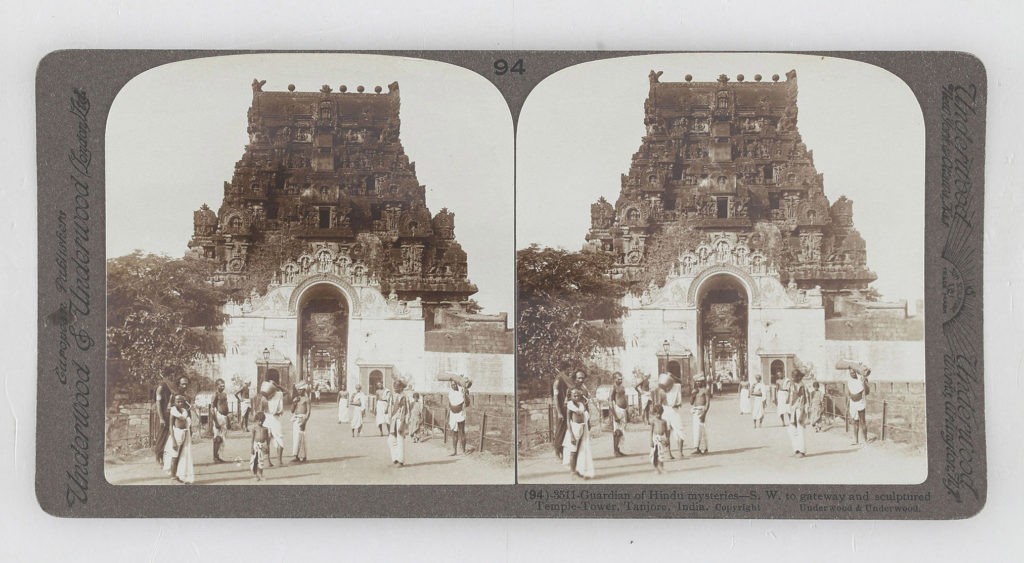
‘Guardian Of Hindu Mysteries- S.w. To ‘Gateway And Sculptured Temple-tower, Tanjore, India’, stereoscope set, c.1900s © Sarmaya Arts Foundation
Religious patronage was vital to create a sense of communal harmony and maintain a peaceful rule. Nayakas undertook building gopurams to temples like the Arunachaleswara at Tiruvannamalai. Prakara walls were built at Vriddhachalam and Kanchipuram and vimanas at Tirupati and Srisailam were gilded with gold. Likewise, Marathas, too, engaged themselves in temple repair and restoration to live up to the generosity of their predecessors. The outer arched gateway at the Brihadeshwara temple was built by the Marathas. Agraharams and mathas were constructed and land was donated to different religions, sects, and communities. Dams were constructed to improve irrigation systems in the Cauvery delta.
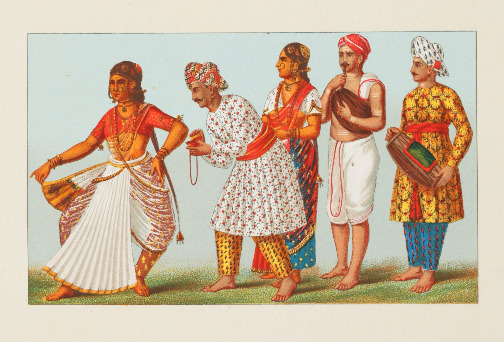
A lithograph showcasing Indian costumes and traditions from Auguste Racinet’s ‘Le Costume Historique’, Paris, circa 1880, rare book © Sarmaya Arts Foundation
The Nayakas and Marathas were busy at work, elevating and placing Thanjavur on the cultural map of India. Not only through their temples, charities and architectural commissions but also with patronage of the performing arts and literature. Many Telugu and Marathi artists were part of the mass migration to Thanjavur when the Nayakas and Marathas established their respective independent rules. Upon arrival, the Nayakas introduced Telugu as the official court language. The Marathas continued the Telugu tradition. But Thanjavur continued to be a centre for Tamil literature and performing arts. The artists of Thanjavur experimented with three languages—Tamil, Telugu and Sanskrit—with the blessings of the rulers. This paved the way for many beautiful artistic interventions to happen in the royal courts in Thanjavur. The veena, as we know it today, was perfected in the court of Raghunatha Nayaka and goes by the name of Saraswathi Veena or Thanjavur Veena. What is known as Bharatanatyam today traces its origin to an ancient dance called Sadir Attam, itself inspired by a form called Dasi Attam. Its contemporary form was created and perfected in Thanjavur by four brothers—Chinnayya, Ponnayya, Sivanandam and Vadivelu—who are known as the Thanjavur Quartet, employed in the court of Maratha ruler, Serfoji II.
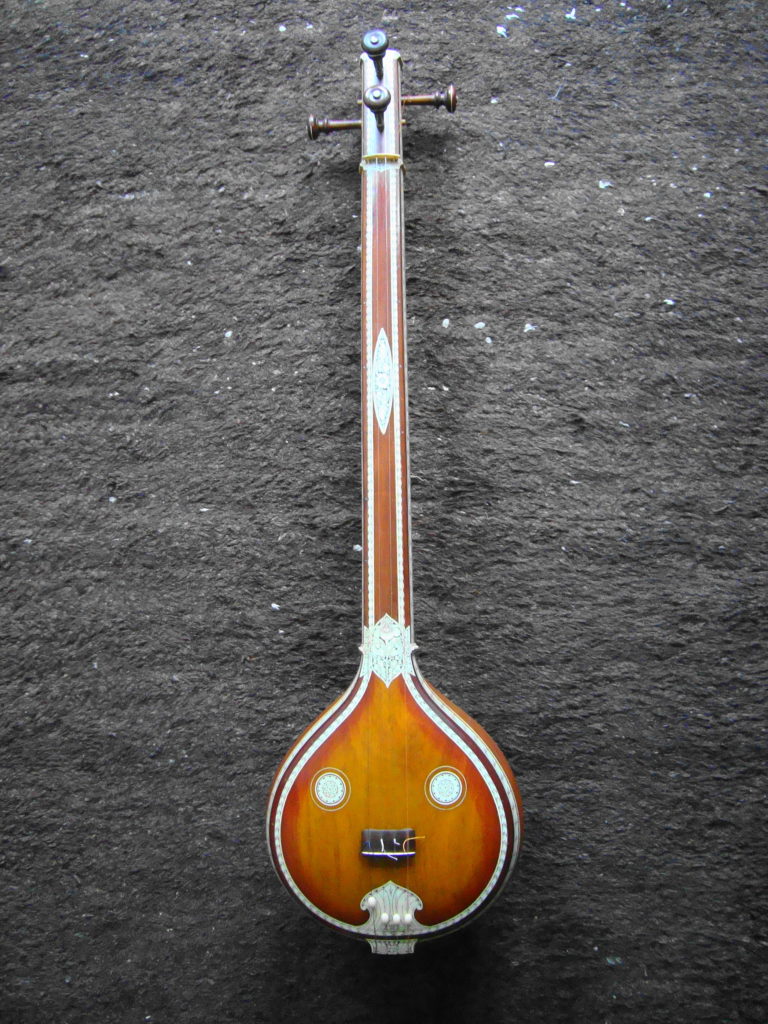
Tanjore style Carnatic tambura, photo by Martin Spaink/CC BY-SA 3.0
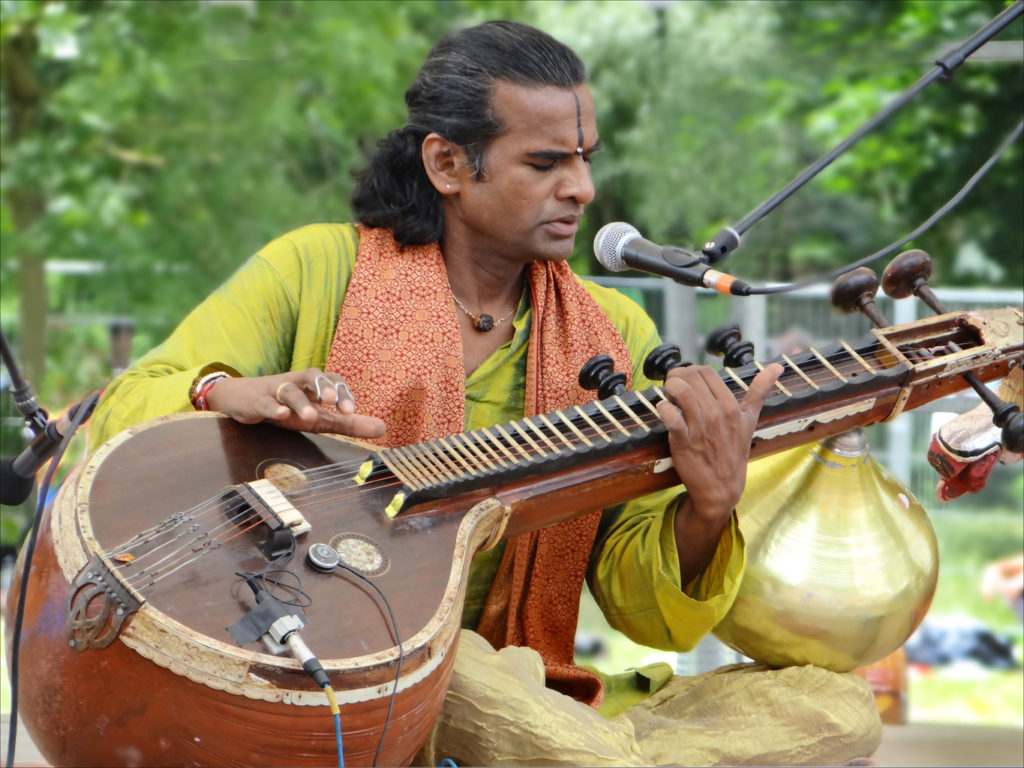
Musician, composer and dancer Raghunath Manet in concert playing the veena, photo by Jean-Pierre Dalbéra/Flickr/CC BY 2.0
Carnatic music was patronised by both dynasties and took on a richer essence with additions to its instrumental lineup thanks to the skilled artists of the royal courts. The Trinity of Carnatic music—Tyagaraja, Muthuswami Dikshitar and Syama Sastri, all of whom lived and worked during the reign of Shahji Bhonsale—created music and ragas primarily in Telugu, Sanskrit and Tamil. Baluswami Dikshitar, brother of Muthuswami Dikshitar, was pivotal in bringing the violin into the Carnatic fold. Both traditions of Carnatic vocal music, the veena and the nagaswami, were encouraged by Serfoji II, who also helped put together a band (a unique concept for the time) called the Thanjavur Band.
Post stamps issued by India Post, Government of India commemorating the Trinity of Carnatic Music, photo courtesy Wikipedia Creative Commons
The rulers, too, personally contributed to the arts. Shahaji I Bhonsale was a composer himself and has been credited with 22 dance dramas and 200 songs in both Telugu and Marathi. He was praised as Abhinav Bhoja. The Marathas also brought to Cholamandalam a composite art of storytelling – Harikatha – through the kirtan performers of Maharashtra.
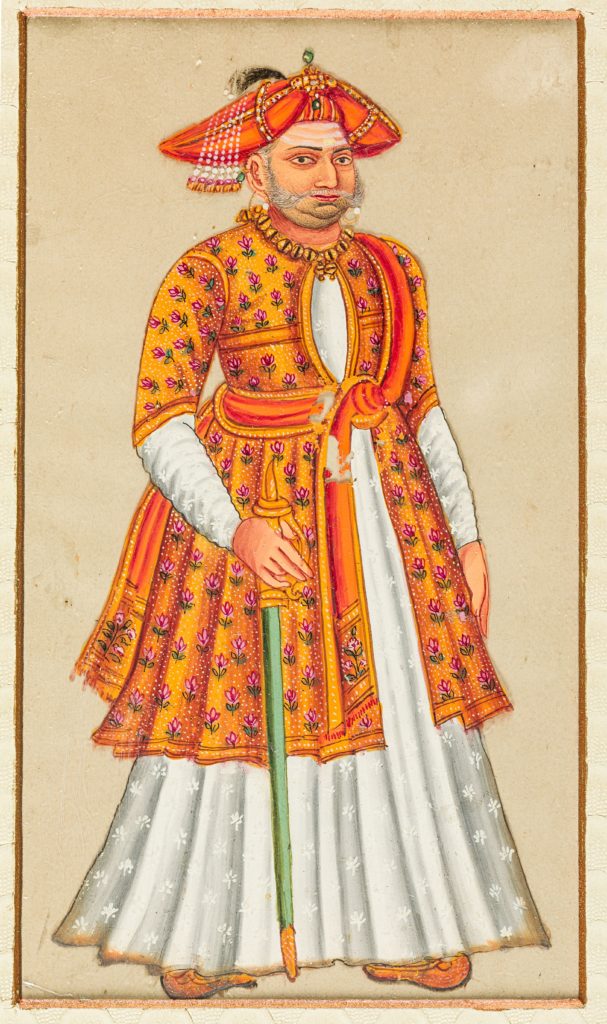
Painting of Serfoji II, photo courtesy National Museum, Denmark
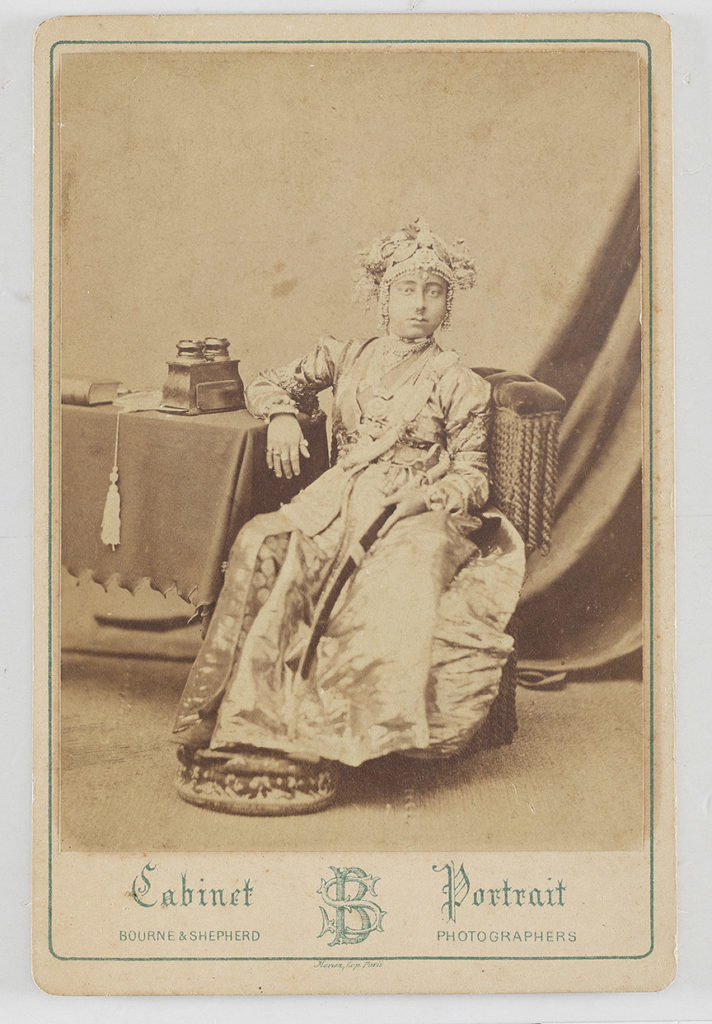
Akhand Soubhagyavati Chiranjiva Vijaya Mohana, Princess of Tanjore (1846-85), daughter of Shivaji Rao Bhonsle, 12th Raja of Tanjore, albumen print, c. 1885 © Sarmaya Arts Foundation
Food was not far behind. Imagine a king (Serfoji) collating all the palace recipes in a cookbook, which was titled Sarabhendra Pakasathram. Due to the amalgamation of multiple regional cultures in Thanjavur, the cuisines that emerged were sophisticated and heavenly. Legend has it that the sambhar originated in the kitchen of a Maratha king. When Sambhaji (Shivaji’s elder son) was visiting his cousins in Thanjavur, the Maratha cooks in the Thanjavur kitchen prepared the usual Maharashtrian amti (a sour lentil curry) for the king. But due to the unavailability of the classic kokum (a souring agent), the cooks used the more plentiful tamarind instead. The improvised dish was well-liked and named sambhar after the visiting monarch, Sambhaji.
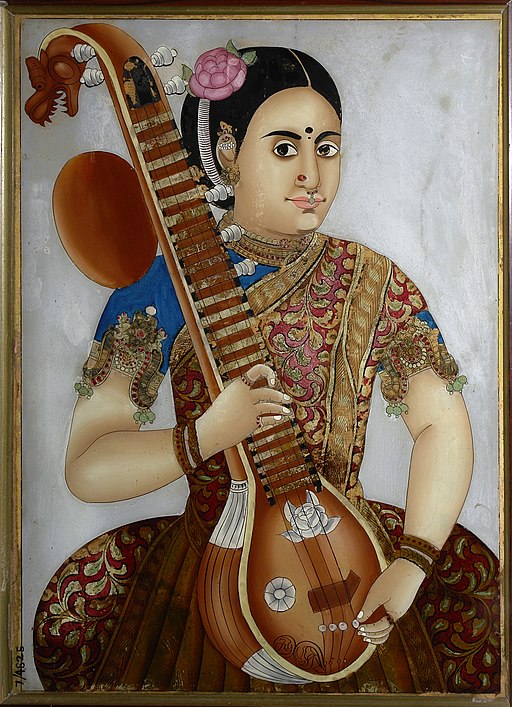
‘Woman with a Saraswati veena’, Tanjore painting housed at the Crafts Museum, New Delhi
A tradition of painting in Thanjavur was thoroughly established during the Cholas, evident in the majestic murals at the Brihadeshwara temple. The Nayaka rule saw this form continue to evolve. However, the gold-veined canvases that we know today as Thanjavur paintings were developed and widely patronised by Serfoji II. The form elegantly folds in Deccan, Mughal and European influences to create a language all its own. The Telugu-speaking artists that painted in this style are believed to have come from the Raju and Naidu communities, who migrated to Thanjavur and Madurai during the Nayaka rule.
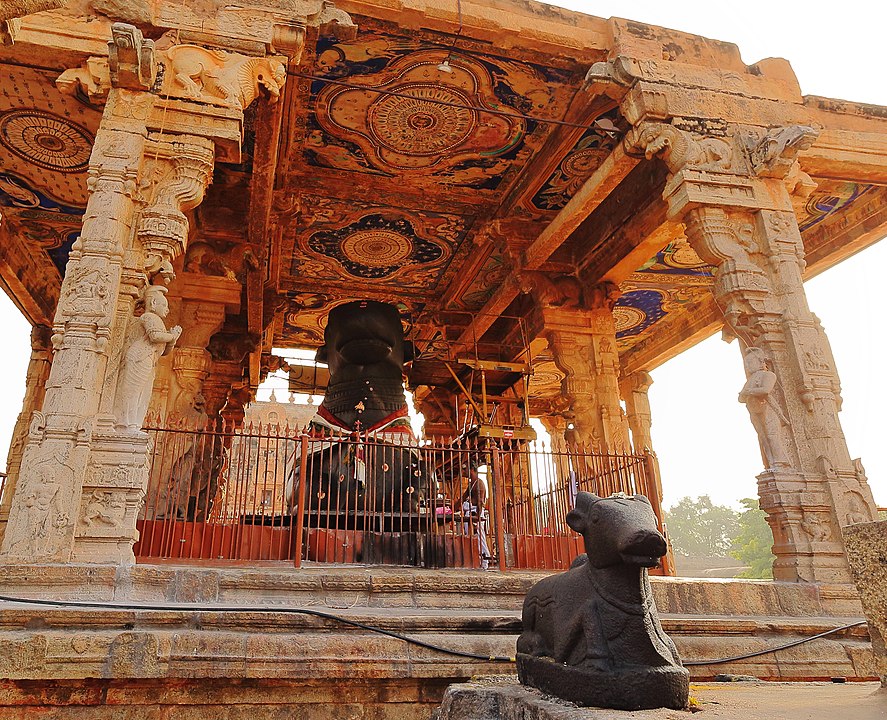
At the Brihadeeshwarar temple, Thanjavur, featuring the Nandi Mandapam with murals on the ceiling, dating to the Vijayanagara-Nayak period, photo by Madhurantakan Jagadeen/CC BY-SA 4.0
Though they came to rule a land linguistically and culturally different from theirs, the Nayakas and Marathas embraced it with a warm heart and left a part of themselves in every piece of Thanjavur, creating in every wall, page and song, a home away from home.
References
Madras District Gazetteers Tanjore by Superintendent Government Press, Madras
Madras District Gazetteers Tanjore Vol Ii : Superintedent Government Press, Madras
Shejavalkar, T. S. Annals of the Bhandarkar Oriental Research Institute 24, no. 3/4 (1943): 258–60.http://www.jstor.org/stable/41688526.
Rajayyan, K. (1970). THE MARATHAS AT TRICHINOPOLY : 1741-1743. Annals of the Bhandarkar Oriental Research Institute, 51(1/4), 222–230. http://www.jstor.org/stable/41688690
Chronicles of the fall of Thanjavur – DNA
Thanjavur after Cholas – The News Minute
Thanjavur emerged as a culture capital under the Marathas – The Hindu
How Thanjavur Maratha cuisine found favour in the south

